Flowers have beautified the landscape of this planet for millions of years.
Plants succeeded in using their flower’s deceptive development–using color and smell to attract insects and animals for successful pollination.
While there are many fragrant and stunning flowers on earth, most of them tend to be similar in size, ranging from about 1 to 5 inches in diameter.
But when it comes to visibility, bright colors also play a crucial role in attracting insects.
The scent, too, is an important characteristic of plant reproduction, and many flowers have a pleasant fragrance.
However, this post will only be listing plant species that have an advantage in terms of size.
These are the top 10 biggest flowers in the world:
10. Lotus

Lotus is one of the most recognizable and sacred flowers in the world.
The lotus flower is not only aesthetically pleasing, but it also holds significant spiritual and cultural importance.
In India, the lotus flower is the national flower and is widely used in religious ceremonies.
The flower’s color plays a crucial role in its significance.
The Nelumbo family’s white and pink lotus flowers are sacred and represent purity and devotion.
In contrast, the brightly colored red, purple, and blue lotus flowers symbolize enlightenment, renaissance, and spiritual awakening.
Lotus flowers grow in murky and shallow waters and require warm sunlight to flourish.
However, they cannot tolerate cold climates, making them unsuitable for winter.
This aquatic flower has its roots deeply embedded in the mud at the bottom of the still waters.
Its short twigs grow up into the water, and the waxy waterproof leaves rest on or above the water’s surface.
When fully matured, the lotus flower’s bloom, which is above the water’s surface, can reach a diameter of up to 20 centimeters (7 inches).
Its beauty is unparalleled, and it can add a touch of serenity and grace to any setting.
Many believe the lotus flower’s unique beauty and spiritual significance make it a perfect choice for any occasion.
9. Magnolia
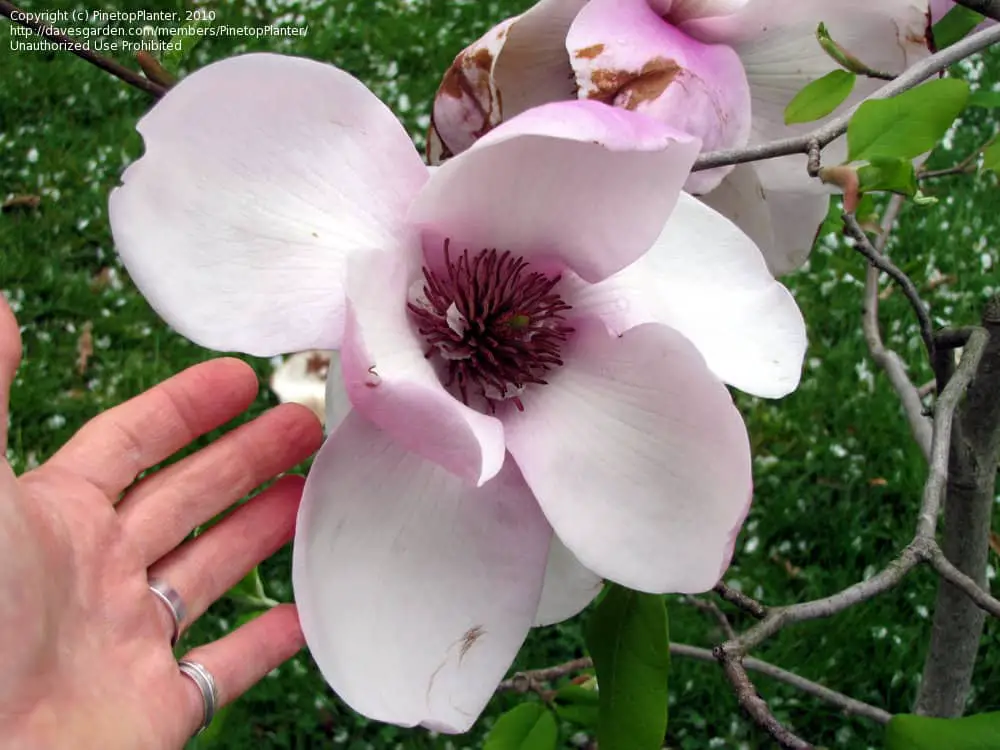
One of the world’s biggest flowering plants, as believed by many researchers, is also the first flowering plant on earth.
Fossils prove that they have been on Earth for around 100 million years, according to scientific research.
Because magnolia is so old, the flowers have no real petals and sepals; they have petal-like tepals instead.
The flowers are not nectar-producing, but they do attract pollinating beetles with fragrant and sweet secretions.
Magnolia flowers come according to a variety of various shapes, sizes, and colors.
The magnolia family comprises high and fluffy trees with pink, white, red, purple, and yellow blossoms.
Most magnolia varieties have wide bulbs measuring 6 to 8 inches in diameter.
8. Hibiscus

Hibiscus or Hibiscus sabdariffa is one of the world’s largest flowers.
These beautiful bright flowers surely beautify a home or garden but are also used as medicine.
We can find these plants in various colors like red, yellow, white, and peach.
Sizewise, Hibiscus can be as wide as 8 inches in diameter.
The hibiscus family is a mix of diverse plants–from annuals to perennials and shrubs–famed for their large, audacious bloom, often as big as a plate.
7. Tree peony
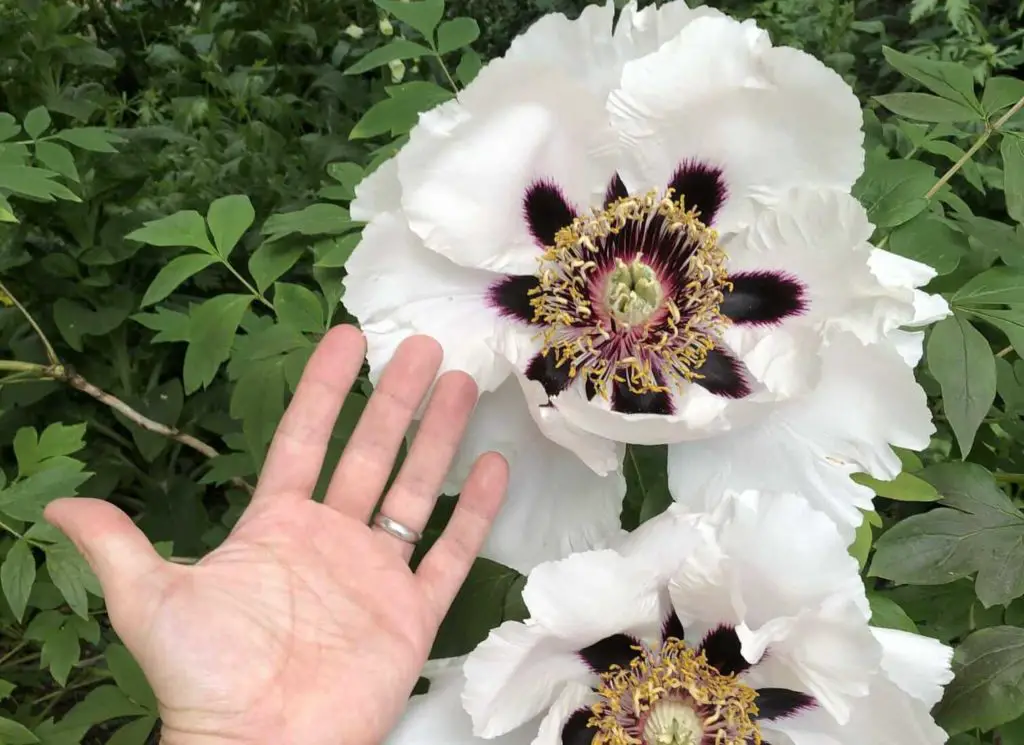
The common peony is an exquisite flower but, its bigger counterpart, the tree peony, is a very different plant.
Tree peonies are woody shrubs, with no support, as some grow at 10 feet high.
They have many forms, colors, and fragrances, and their flowers are much bigger and typically bloom about two weeks earlier than herby peonies.
Chinese use them as decorative ornaments and for medicinal purposes.
6. Common Sunflower

Sunflowers are mainly from North and South America, and some species are cultivated on farms for the spectacular sizes of their blossom and for their edible seeds (to make sunflower oil or can directly be eaten roasted).
At least 6-8 hours of direct sunlight per day is needed for the sunflowers, the better if you try to maximize their potential for size.
The excessive blooming of gigantic sunflowers is difficult to top.
On towering stems, the Russian variety opens flowers up to 14 inches in diameter, and 9 to 12 feet high.
Farmers generally sow seeds in spring while they harvest the crop at the end of summer.
If considered usability, the sunflower is the biggest flower in the world.
5. Puya raimondii
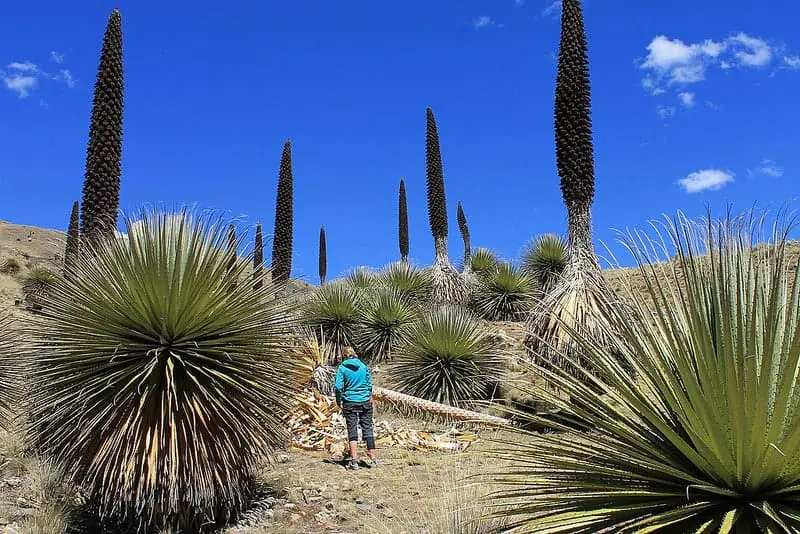
Puya raimondii is the largest bromeliad species, with a height of up to 15 m, and is also known as the queen of the Andes.
We can find this type of plant species in Bolivian and Peruvian forests from the high Andes.
The flower can reach a height of up to 30 feet (9.14 m) and contains 8-12 million seeds per plant.
The Queen of the Andes in the wild has only three populations.
There are thousands of species comprising the bromeliad group, but Puya raimondii has less genetic diversity.
Puya raimondii is currently on a verge of extinction because of the inability to adapt to climate change and deforestation.
4. Neptune grass (Posidonia oceanica)
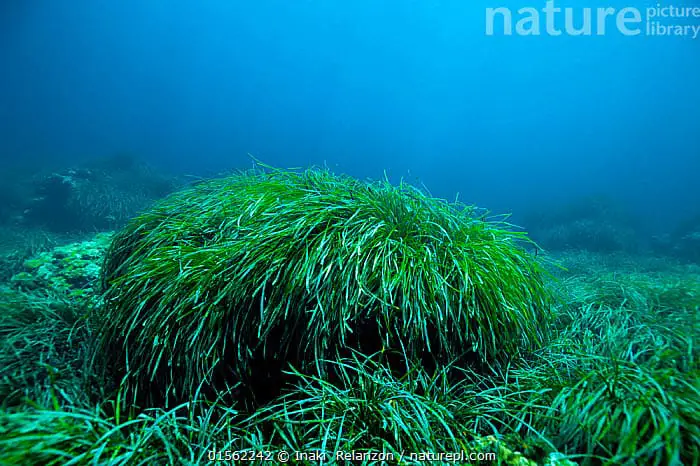
A group of scientists has sequenced the Posidonia oceanica, which is also named “Neptune grass” to be around 200,000 old seaweed covering ocean floors from Spain to Cyprus.
The plant has roots, twigs, leaves, and flowers, and it creates fruits known as sea olives.
It should not be confused with algae. It flowers in the autumn.
The leaves are tape-shaped, measuring between 1 cm in width and between 30 and 120 cm.
This aquatic plant lives in the Mediterranean Sea and certain areas south of Australia, with similar characteristics to dry land.
Among the many strengths of Neptune Grass is that it oxidizes the oceans and is also a food source for many animal species.
Its appearance also shows that the water is of good quality and is well stored. Biologists often term Posidonia Oceanica as “Mediterranean’s Lungs.”
3. Talipot palm
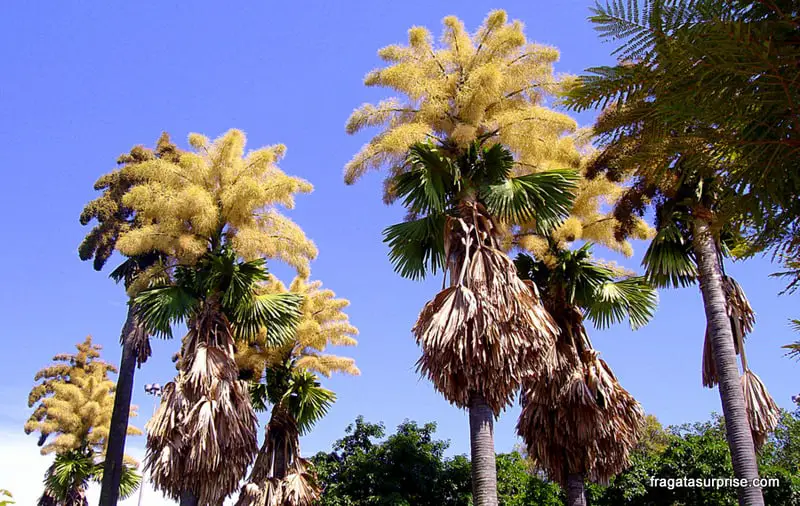
Talipot palm is one of the world’s largest palms, having origins in South India.
It has a height of up to 25 m and a diameter of stems of up to 1.3 m.
It is a palm fan with a diameter of up to 5 m, a petiole of up to 4 m, and around 130 leaflets.
The Talipot Palm has one or more million small flowers, the largest inflorescence in any plant, 6-8 m long, on a branched trunk stitched on top of a trunk.
The Talipot palms are monocarpic, which means they flower only once at the age of 30 to 80.
Talipot Palm has many uses it is as useful as coconut in its native region, and Talipot fruits, which are surprisingly tasty, are known as ice apples.
2. Titan arum
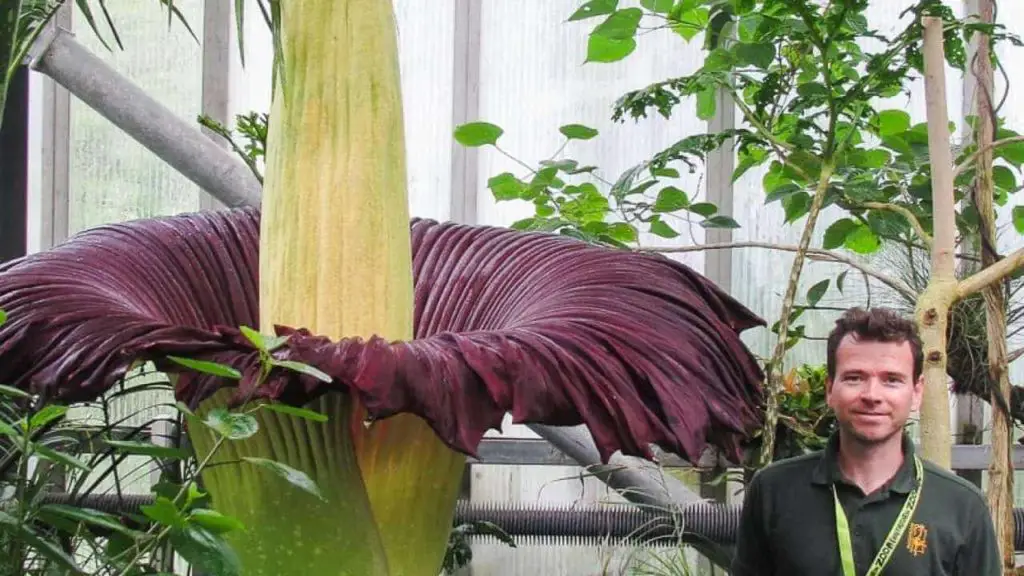
Titan arum, also known as Amorphophallus titanum or death flower, is a rare flowering plant with the largest unbranched inflorescence in the world.
However, it is not one of the best-smelling flowers, as it releases an odor similar to that of a decomposing corpse while it is in bloom.
The plant itself can reach heights of approximately 10 to 15 feet, with leaves as large as 13 feet.
The fluorescence of the Titan arum is not as large as that of the talipot palm, but rather branches off, making it a bigger flower.
The tallest recorded bloom of the corpse flower, according to the Guinness Book of World Records, was 10 feet 2.225 inches tall, making the Titan arum the tallest flower in the world.
Despite its significance, the corpse flower is classified as “vulnerable” on the Red List of Threatened Plants by the International Union for the Conservation of Nature (IUCN).
If the conditions that affect its life and reproduction do not change, the plant may become endangered, with habitat loss and devastation being the primary threats.
1. Rafflesia arnoldii
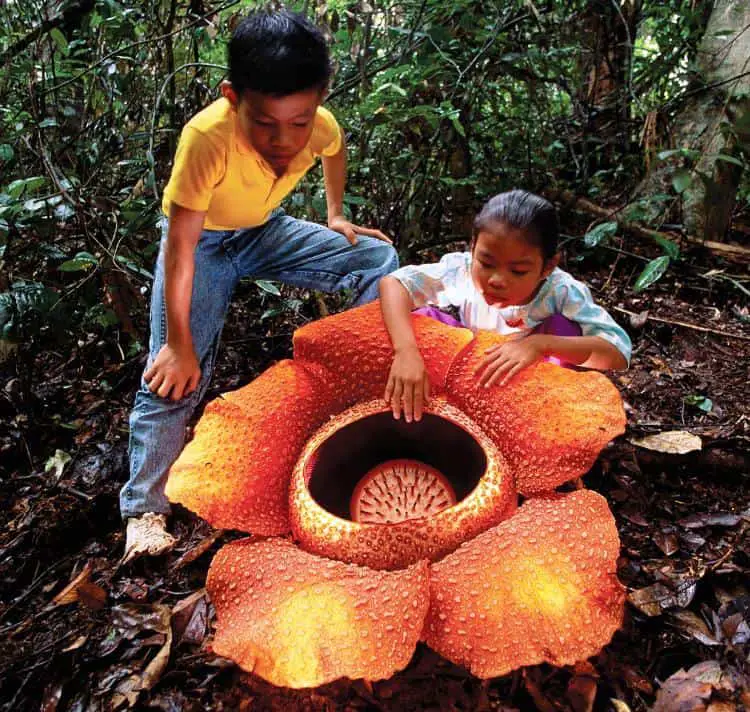
Rafflesia arnoldii is the largest flower in the world that has a diameter of over three feet.
It is also known as Rafflesia tuanmudae or Stinking corpse lily or corpse flower and is one of the largest living organisms.
This parasitic plant is steady, not visible until it is about to bloom, with no roots, stems, twigs, or leaves.
Buds arise over months to the size of the cabbage without a sign of the contaminated host plant.
Corpse flowers bloom too, has a rotten corpse smell (more intense than Titan arum).
While the flies gain nothing from the flowers, the pollen sticks to their back as they rest on the bloom, attracted by its rotten meat scent.
When these flies pass into a female flora, the pollen is released in the flowers so they can fertilize it.
Its produced fruit has thousands of seeds and is fleshy and small.
Such fruits are consumed by tree shrews, which then continue to disperse the plant’s seeds (by excretion).
Since Rafflesia is a unisexual plant and an uncommon one, flies sitting on a male’s bloom and bringing pollen from that flower have low chances of sitting on a female bloom and passing pollen into the female for fertilization.
Rafflesia arnoldii is one of the world’s most endangered plant species.
The International Union for the Conservation of Nature (IUCN) classifies certain Rafflesian species, such as Rafflesia Magnifica, as “critically endangered.”
Rafflesia’s two primary factors contributing to the extinction of these species are the limited geographic area of this species and deforestation.
I hope you liked this list about the largest flowers in the world, please do share this post with your curios friends on social media.
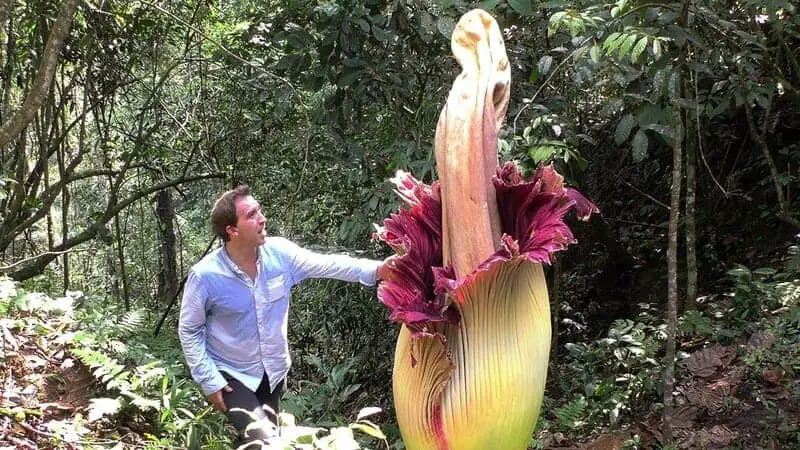
flowers are really beautiful, i call them Gods way of making the world look and smell nice. i have been to lots of flower gardens and i have planted lots of flowers of different variety in the back yard of my house just to sniff and admire them every morning. i would really love to be into the flower business because it is a real fun and lovely thing to do. This content is no doubt very engaging. I am going to bookmark your blog and keep checking it weekly to read more contents like this. Open this link to reach my website and check out its contents. Please let me know if this okay with you. Many Thanks
Calla Lily is gorgeous, white bloom symbolizes magnificence and beauty
Middlemist’s Red is one of the rarest
🤩 wow 🤩
So wonderful information